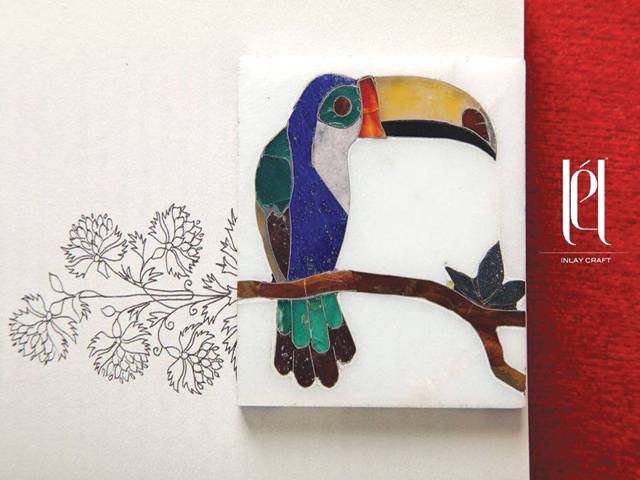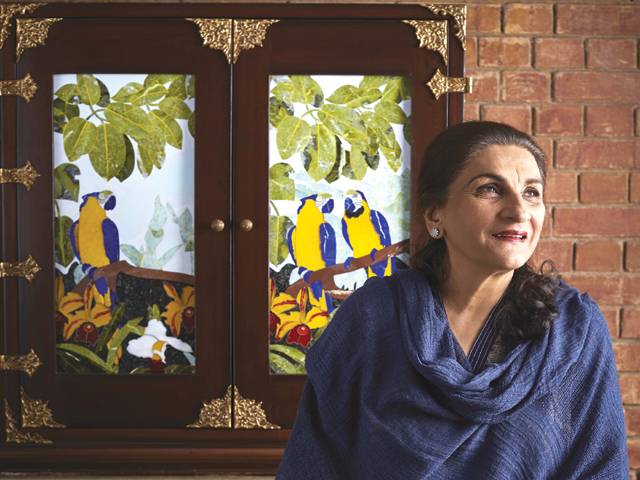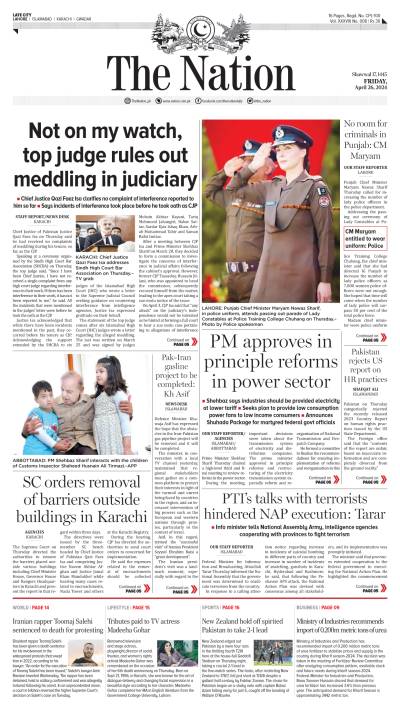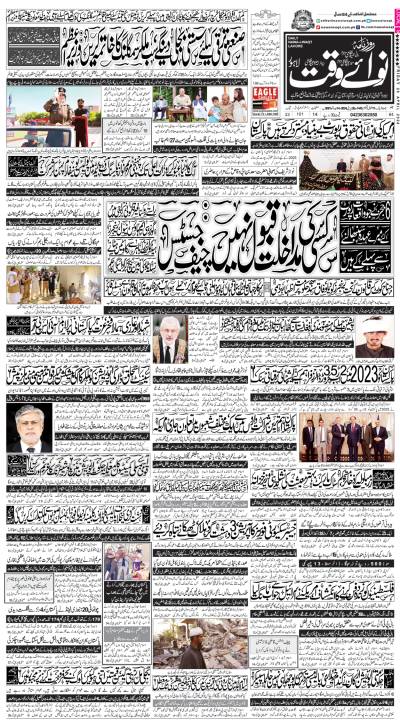LAHORE-Farhana Asad has dedicated nearly half her life to the study and revival of the traditional arts through a host of mediums. She is preserving traditional hand crafted techniques that are being entirely lost due to mechanization. They are focused in building a community of classically trained artisans, working with their hands and hearts, to sustain the soul of a society through its handicrafts that have been traditionally passed down from generation to generation. She strongly believes that preserving the traditional artistic traditions can help heal a culture that is ravaged with strife and war. In an exclusive interview with The Nation she talks about her success and career. Following are the excerpts of the interview.
Tell us about the journey of an ordinary girl who perused her passion in craftsmanship that led to building up a brand LÉL?
This journey of 30 years has been very challenging but extremely fulfilling. Although I was an art student, working in stone came by chance, which then became a passion. I have studied art at school and college so I was already an art student, working in various mediums but when I came across the technique of transforming “hard stone” into works of art I continued to evolve this new passion.
What is your chosen medium and what techniques do you follow to indulge new ideas with your work?
I have worked in several mediums. As an artist, however, Lél is centered on stone and we have developed various techniques through trial and error. Some techniques I have invented on my own but at core we follow the ancient Florentine technique.
How would you describe your work and where do you think it fits within the sphere of contemporary art?
Our work is based on a traditional art form. However, we are attempting to combine modern aesthetics without compromising with the techniques of Pietra dura. Pietra dura is a very ancient technique and is extremely time consuming which makes it very expensive. We are trying to make contemporary pieces and modernizing it without changing the technique.
Would you like to share some interesting events that led to a success story of your brand Lél?
During the early 1980s, I was travelling through the antique bazaar of Peshawar’s Walled City. The market lanes teemed with all kinds of wares and they were also marked by Afghan refugees who had poured into the city in scores due to the Russian invasion and subsequent war in Afghanistan.
A small box with a roughly hewn image of an American eagle caught my eye at one of the stalls. Upon asking its maker, I was guided to the home of an old Afghan man living in a tiny room laden with works in stone inlay. The art, he acknowledged, had been passed down in his family through generations.
For me, this was a transformative moment. The chance discovery of a graven box in Peshawar served as impetus for me to begin learning techniques of Pietra dura with a master artisan.
Where do you get the beautiful stones you use in your work? Describe the kinds of stones for our readers?
Our palette is a wide array of wonders, which includes a range of semi-precious stones (Onyx, Jasper, Agate, Jade, Serpentine, Sandstone), and coloured marble (Mardan pink and Ziarat white) sourced from the mountains of Pakistan. Whereas, Lapis Lazuli is sourced directly from the Badakhshan province in Afghanistan, Malachite from South Africa and Turquoise from Iran, our pallette is itself a discovery of the natural wonders, which we artistically shape and customise.
Where do the craft of Parchin Kari design stands today?
There is only one school in Florence that still practices this technique. They call it a laboratory not a workshop. The art form still survives in Agra as MKughal emperors were big patrons of this art form. The Taj Mahal itself is decorated with stone inlay and we are perusing it in Pakistan. The technique varies from place to place, but the concept of stone inlay remains the same.
Any upcoming exhibitions audience should be looking forward? What’s on the horizon for you at the moment?
We are exhibiting at the HSY Mansion in Karachi from the 5th till the 7th of January. There was a lot of demand coming from Karachi for an exhibition. I feel people in Karachi really understand and appreciate the art and technique of what we do. After this we are also planning an exhibition in Lahore.







